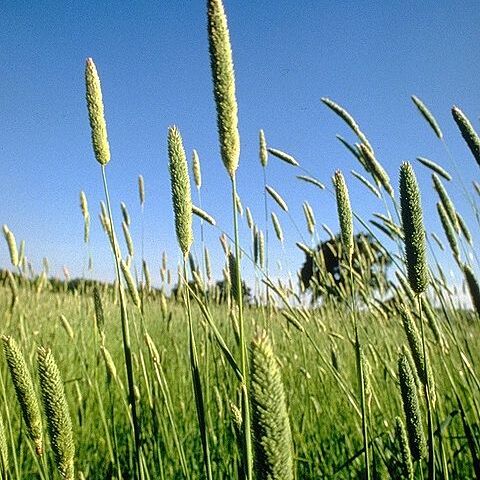Annual or perennial, tufted or rhizomatous. Leaf blades linear, flat; ligule membranous. Inflorescence a contracted or spikelike panicle. Spikelets strongly laterally compressed, florets 3 with lower 2 usually reduced to sterile lemmas and uppermost floret bisexual, disarticulating above glumes, rachilla not or very rarely extended beyond uppermost floret; glumes subequal, boat-shaped, as long as spikelet and enclosing florets, herbaceous, prominently 3-veined, strongly keeled and often winged along midvein; sterile lemmas up to 1/2 as long as fertile lemma, narrow, often hairy, or one or both reduced to a vestigial fleshy scale at base of fertile floret; fertile floret shorter than glumes, leathery often becoming cartilaginous and shiny, rounded on back, obscurely 5-veined, awnless; palea resembling lemma, 2-veined. Caryopsis tightly enclosed by lemma and palea; embryo small; hilum linear. x = 7.
Spikelets articulated above the glumes, with 1 perfect terminal fl and 1 or (in our spp.) 2 much smaller linear sterile lemmas below it; glumes subequal, compressed and keeled, often winged along the keel, the lateral veins usually stronger than the midvein; lemmas awnless, shorter than the glumes, the fertile one firm or coriaceous and often shining; ligules membranous, usually large; panicle dense or spike-like, with medium-sized to large spikelets. 15, cosmop., mainly temp.
Spikelets solitary, shortly pedicelled, laterally compressed, 1-flowered, but usually with 1-2 sterile and much reduced florets; rhachilla disarticulating above the glumes, not or only spuriously extended beyond the terminal floret; florets usually 3, the first and second rudimentary, minute, the terminal one hermaphrodite.
Glumes usually glabrous, papery, boat-shaped, keeled, the keel often broadened into a wing; sterile florets up to about half as long as the fertile lemma, subulate or chaffy, usually pubescent, sometimes 1 or both reduced to a fleshy scale at the base of the fertile floret; fertile lemma glabrous or pubescent, often shiny.
Sterile lemmas very small (often scale-like), subulate to lanceolate, membranous with a callous base, the fertile one 5-nerved, membranous at first, later coriaceous to indurate, often glossy, broadly ovate, acute.
Caryopsis ovate to ovate-elliptic in outline, somewhat laterally flattened, enclosed by the lemma and palea; hilum oblong or linear, short; embryo 1/4-1/3 the length of the caryopsis.
Glumes 2, equal to subequal, 3-nerved, persistent, completely enclosing the floret (s), cymbi-form, often strongly keeled, membranous, with the keel broadly winged.
Ovary elliptic in outline, glabrous; styles distinct, long; stigmas plumose, slender, apically exserted.
Palea c. as long as the lemma, 2-nerved, hyaline, usually ciliolate along the keels.
Inflorescence a many-flowered rather condensed spike-like panicle, often capitate.
Ligule membranous, usually truncate.
Annuals or perennials.
Lodicules 2, hyaline.
Stamens 3.


